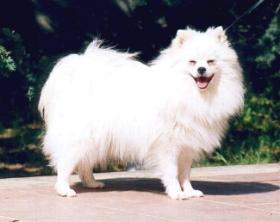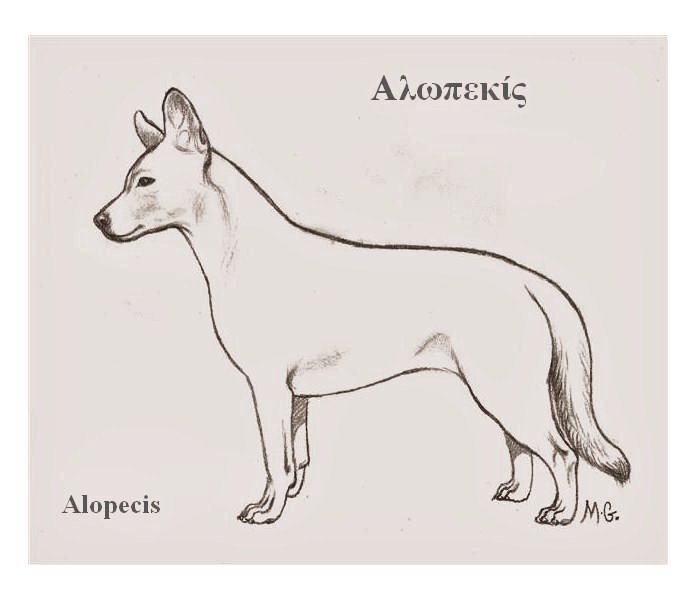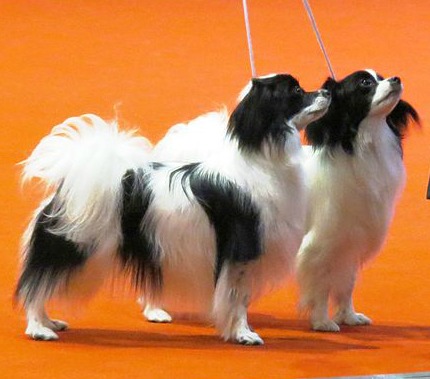Coton de Tulear
The Coton de Tulear is a small, affectionate breed known for its fluffy, cotton-like coat and playful personality. Originating from Madagascar, these dogs thrive on companionship and make excellent family pets.
Overview
🐕Breed Overview
✨Key Traits
💡What Makes Coton de Tulear Special
The Coton de Tulear is characterized by its cotton-like coat, which is soft and fluffy, requiring regular grooming to maintain its appearance. They are known for their high affection levels, scoring a perfect 5/5, and their playful nature, making them a joy to have around.
Their sociable personality allows them to get along well with children and other pets, and they are generally friendly towards strangers. Cotons are intelligent and trainable, thriving on positive reinforcement and socialization.
Their adaptability to different living situations and their love for human interaction make them an ideal choice for families and individuals alike.
The Coton de Tulear, often referred to as the 'Royal Dog of Madagascar,' is a charming and affectionate breed known for its fluffy, cotton-like coat and playful personality. Originating from Madagascar, this small breed has a rich history that dates back to the 16th century when sailors brought small bichon-type dogs to the island. Over time, these dogs adapted to their new environment, leading to the development of the Coton de Tulear as a distinct breed.
With a height of 9 to 11 inches and a weight ranging from 8 to 13 pounds, Cotons are perfect companions for families and individuals alike. Their friendly and sociable nature makes them excellent family pets, as they get along well with children and other animals. Cotons are known for their high affection level, scoring a perfect 5/5 in this category, and they thrive on human companionship.
They are also playful and energetic, making them a joy to have around. Despite their small size, they possess a big personality and are often described as cheerful and eager to please. Training a Coton de Tulear is relatively easy, as they are intelligent and responsive to positive reinforcement.
However, early socialization is crucial to prevent any timid behavior. While they are not known for being aggressive watchdogs, they will bark to alert their owners of any unusual activity. Grooming is a significant aspect of caring for a Coton de Tulear, as their dense, fluffy coat requires daily brushing to prevent matting.
Regular bathing is also recommended to keep their coat clean and healthy. Despite their grooming needs, Cotons are considered hypoallergenic, making them suitable for allergy sufferers. In terms of health, Cotons are generally healthy dogs, but they can be prone to certain issues such as spinal disc disease and eye problems.
With a lifespan of 12 to 15 years, they can be a long-term companion for their owners. Overall, the Coton de Tulear is a delightful breed that brings joy and companionship to any household. Their playful nature, affectionate demeanor, and adaptability make them a perfect choice for families and individuals looking for a loving pet.
🎉Fun Facts
Cotons have a unique vocalization style, often making a variety of sounds to communicate with their owners.
The Coton de Tulear is known for its hypoallergenic coat, making it a great choice for allergy sufferers.
They are often referred to as the 'Royal Dog of Madagascar' due to their historical significance among the nobility.
Breed Characteristics
Family & Friends
Good Behavior
Get Up & Go
Household Harmony
Temperament & Personality
✨Key Traits
🐕Core Temperament
The Coton de Tulear has a friendly and playful temperament. They are affectionate and enjoy being around people, making them excellent companions.
Their sociable nature allows them to get along well with children, other dogs, and pets. While they are not aggressive, they may bark to alert their owners of strangers.
Cotons are generally calm indoors but can become lively during playtime. Their intelligence and eagerness to please make them easy to train, but they require early socialization to develop confidence and reduce any timid behavior.
💫Personality Profile
Coton de Tulears are known for their cheerful and affectionate nature. They thrive on human companionship and are happiest when they are with their families. Their playful demeanor makes them great companions for children and other pets.
They are generally friendly towards strangers, making them poor guard dogs but excellent family pets. Cotons are intelligent and eager to please, which makes training relatively easy. They enjoy interactive play and can adapt well to various living environments, from apartments to larger homes.
Despite their small size, they have a big personality and love to engage in activities with their owners.
🔊Vocal Tendencies
Coton de Tulears are known to be vocal dogs, often barking to alert their owners of visitors or unusual sounds. While they are not excessive barkers, they do enjoy expressing themselves through a variety of vocalizations, including grunting and playful barks.
Their vocal tendencies can be managed through training, and they typically bark less when they feel secure and well-socialized. Overall, their noise level is moderate, and they can be taught to be quieter when necessary.
Affection & Social Traits
Energy & Activity
Communication Style
Care Requirements
🏃♂️Exercise Requirements
Daily Exercise
The Coton de Tulear is a small breed with low exercise needs. They require minimal physical activity, making them suitable for apartment living and less active households. A daily short walk of about 20-30 minutes is sufficient to keep them healthy and happy.
They also enjoy playtime indoors, where they can engage in games like fetch or tug-of-war. Given their playful nature, they thrive on interactive play sessions with their owners. It's important to note that while they are not high-energy dogs, they do enjoy mental stimulation through play and training exercises.
Puppies may require shorter, more frequent play sessions, while senior dogs may benefit from gentle activities that cater to their mobility. Regular exercise helps maintain their weight, supports cardiovascular health, and contributes to their overall well-being. Insufficient exercise can lead to boredom, which may result in destructive behaviors or excessive barking.
Preferred Activities
🏠Living & Adaptability
Space Requirements
Coton de Tulears are very adaptable and can thrive in various living environments, including apartments, small homes, or larger houses with yards. They do not require a large outdoor space, but they do benefit from a safe area where they can play and explore.
Owners in smaller spaces should ensure that their dogs receive adequate exercise and mental stimulation through walks and indoor play. The breed's small size and friendly demeanor make them suitable for urban living, but they should not be left alone for long periods, as they thrive on companionship and interaction.
Climate Preference
🍲Feeding Guide
Schedule
Food Types
Portion Size
Special Nutritional Needs
Coton de Tulears do not have specific dietary restrictions, but it is essential to provide a balanced diet rich in protein and healthy fats to support their overall health. Some Cotons may be prone to food sensitivities, so it's advisable to monitor their reactions to new foods. Regular veterinary check-ups can help ensure their nutritional needs are being met.
✨Grooming Requirements
Grooming Overview
The Coton de Tulear has a beautiful, fluffy coat that requires regular grooming to maintain its appearance and prevent matting. Daily brushing with a pin brush is essential to remove tangles and debris. Owners should pay special attention to areas prone to matting, such as behind the ears and under the legs.
Bathing should be done approximately once a week to keep the coat clean and fresh. When bathing, use a gentle dog shampoo to avoid skin irritation. After bathing, it's important to thoroughly dry the coat, as moisture can lead to matting.
Regular trimming of the coat may also be necessary to keep it manageable, and many owners opt for a shorter 'puppy cut' to reduce grooming time. Additionally, regular nail trimming and ear cleaning are important parts of the grooming routine to ensure overall health and hygiene.
Care Schedule
Brush daily, bathe weekly, trim nails every two weeks.
Health Profile
⚕️Health Care
Regular health care is vital for the Coton de Tulear's lifespan. Routine veterinary check-ups, vaccinations, and preventive treatments for parasites are essential for maintaining their health.
Early detection of health issues through regular examinations can lead to more effective treatment and management. Additionally, dental care is crucial, as dental disease can lead to systemic health problems.
Owners should prioritize dental hygiene through regular brushing and professional cleanings as needed. Overall, a commitment to health care throughout the dog's life will contribute to a longer, healthier lifespan.
Health Issues Overview
⏳Average Lifespan
Genetic Factors
Genetics play a significant role in the Coton de Tulear's lifespan, as certain hereditary health issues can affect their longevity. Responsible breeding practices that prioritize genetic diversity can help reduce the risk of inherited conditions.
Potential owners should seek reputable breeders who conduct health testing and provide transparency about the lineage of their puppies. Understanding the genetic background of a Coton can help owners anticipate potential health issues and take proactive measures to ensure their dog's well-being.
Living Conditions
The Coton de Tulear's lifespan can be influenced by various environmental factors. Living in a stable, loving home with regular veterinary care, proper nutrition, and mental stimulation can significantly enhance their longevity.
Exposure to a safe environment with minimal stress and opportunities for social interaction also contributes to their overall well-being. Additionally, maintaining a healthy weight through balanced nutrition and regular exercise is crucial for preventing obesity-related health issues, which can shorten their lifespan.
Cotons thrive in environments where they receive plenty of attention and companionship, as they are sensitive to isolation and can develop anxiety if left alone for extended periods.
🏥Common Health Issues
Spinal Disc Disease
Warning Signs
🔬Diagnosis
Veterinarians typically diagnose spinal disc disease through physical examinations, imaging tests such as X-rays or MRIs, and assessment of neurological function.
💊Treatment
Treatment options may include medication for pain relief, physical therapy, or, in severe cases, surgery.
📝Management Tips
Maintain a healthy weight, provide low-impact exercise, and avoid high-impact activities. Consult a veterinarian for pain management options if symptoms arise.
Eye Problems
Warning Signs
🔬Diagnosis
Eye problems are diagnosed through veterinary eye examinations, which may include visual acuity tests and assessments of eye structure.
💊Treatment
Treatment may involve medication, surgery, or other interventions depending on the specific condition.
📝Management Tips
Regular veterinary check-ups and monitoring for signs of eye issues can help catch problems early. Keeping the coat trimmed around the eyes can also reduce irritation.
🛡️Preventive Care
🔬Hip Evaluation
Hip Evaluation assesses the hip joints for dysplasia and other abnormalities that could affect mobility and quality of life.
📅 Recommended annually for adults and before breeding.
🔬Patellar Luxation Evaluation
Patellar Luxation tests for dislocation of the kneecap, which can lead to mobility issues and pain.
📅 Recommended annually for adults and before breeding.
🔬Ophthalmic Examination
Eye Examination checks for common eye issues such as cataracts or progressive retinal atrophy.
📅 Recommended annually, especially for older dogs.
Training
🧠Intelligence & Trainability
💪Work Drive
Coton de Tulears have a moderate work drive, primarily stemming from their history as companion dogs. They thrive on mental stimulation and enjoy engaging activities that challenge their intelligence.
Activities such as agility training, obedience classes, and interactive games can keep them mentally sharp and fulfilled. While they do not require extensive physical exercise, incorporating playtime and training into their daily routine will satisfy their need for engagement and prevent boredom.
Without sufficient mental stimulation, they may resort to undesirable behaviors such as barking or chewing.
⚠️Training Considerations
Coton de Tulears are generally eager to please and easy to train, but they can exhibit some behavioral challenges if not properly socialized from a young age. Their sensitivity means they may become anxious or fearful in unfamiliar situations, leading to excessive barking or timid behavior.
To overcome these challenges, early socialization with various people, pets, and environments is crucial. Positive reinforcement training methods work best, as harsh corrections can lead to fearfulness.
Consistent training and exposure to new experiences will help them develop confidence and reduce anxiety-related behaviors. Additionally, their tendency to bark can be managed through training that reinforces quiet behavior in appropriate contexts.
📝Training Tips
Training a Coton de Tulear should begin early, focusing on basic obedience commands and socialization. Use positive reinforcement techniques such as treats, praise, and play to motivate them. Keep training sessions short and engaging, as Cotons have a playful nature and may lose interest if sessions are too long.
Incorporate fun activities like agility training or interactive games to keep them mentally stimulated. Consistency is key; establish clear rules and boundaries to help them understand expectations. Socialization with other dogs and people is essential to prevent shyness or fearfulness.
Regular training will also strengthen the bond between the dog and its owner, making them more responsive and well-behaved.
History & Heritage
📜Origin Story
The Coton de Tulear's origin is steeped in maritime history and adventure. It is believed that these small dogs were brought to Madagascar by sailors who used them as companions and ratters on ships. One popular tale suggests that a shipwreck occurred off the coast of Tulear, where several of these dogs survived and made their way to shore.
Over time, they interbred with local dogs, creating a unique breed that thrived in the island's environment. The Coton's fluffy, cotton-like coat and friendly disposition quickly endeared them to the local population, particularly the Merina nobility, who adopted them as their royal companions. By the 17th century, the breed had become a symbol of status, and ownership was restricted to the elite.
The Coton de Tulear's journey from shipwreck survivors to royal companions is a testament to their resilience and charm.
⏳Development History
The Coton de Tulear's history dates back to the 16th and 17th centuries when small bichon-type dogs were brought to Madagascar by sailors and traders. These dogs likely descended from the Bichon Tenerife and other similar breeds.
Over time, these dogs adapted to their new environment, leading to the development of the Coton de Tulear as a distinct breed. The breed was cherished by the Merina nobility, who prohibited commoners from owning them.
This exclusivity contributed to their royal status. In the late 20th century, the breed faced near extinction due to limited breeding practices, but efforts to revive the breed began, leading to its recognition by various kennel clubs, including the AKC in 2014.
🛡️Purpose & Historical Role
Originally bred as companion dogs, the Coton de Tulear has maintained its role as a beloved family pet throughout its history. Their friendly and affectionate nature makes them excellent companions for individuals and families alike.
In addition to companionship, some Cotons have excelled in agility and other dog sports, showcasing their intelligence and trainability. While they are not traditional watchdogs, they will bark to alert their owners of any unusual activity, making them suitable for light watchdog duties.
🏺Cultural Significance
The Coton de Tulear is often referred to as the 'Royal Dog of Madagascar' due to its historical association with the Malagasy nobility. This breed was highly valued and only owned by the elite, symbolizing status and luxury.
The Coton's presence in Madagascar is deeply rooted in the island's culture, and it has become a national treasure. The breed's charming personality and unique appearance have made it a beloved companion not only in Madagascar but also around the world.
Their historical significance is celebrated through various cultural references, including stamps and art, highlighting their importance in Malagasy heritage.
Conservation Status
This breed is less common but has stable populations in certain regions.









